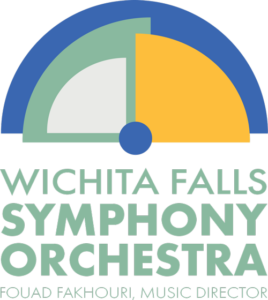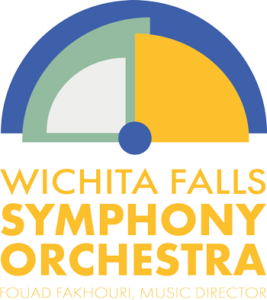“An American Icon—The Music of John Williams”
written by Todd Giles
Generations of Americans have grown up with the cinematic scores of John Williams, the most well-known, influential, and highly-awarded composer working over the last fifty years. Whether you were a Baby Boomer watching the world you knew coming to an end on the big screen in the 1970s in The Towering Inferno, Earthquake and The Poseidon Adventure, a GenXer mesmerized by the new worlds of Star Wars, Superman and ET, a Millennial coming of age alongside the young characters in the first three Harry Potter films, or a GenZer watching the Obi-Wan Kenobi miniseries on your iPad, Williams’s music has provided the soundtracks of our lives for decades. And if you are a member of the Silent Generation, you have likely enjoyed watching your children and grandchildren growing up to many of these same films and more, including Home Alone, Hook and 1941. Even though Williams has announced his intention to retire from film score composition in 2023 with the completion of the fifth Indiana Jones film, his music will no doubt continue to play an immeasurable role in the lives of future generations to come.
Inspired by the previous generation of great American film composers he worked with early in his career as a Hollywood studio session musician such as Erich Korngold, Alfred Newman and Franz Waxman, Williams’ signature sound was also inspired by the sweeping orchestral style of 19th century Romantics Wagner and Tchaikovsky, especially their use of leitmotifs, or recognizable themes associated with specific characters, places or situations. Perhaps Williams’ most recognizable leitmotif is the classic repetition of two-notes throughout his eco-suspense film Jaws.
Many of Williams’ other most memorable leitmotifs are found in his music for the Star Wars saga, such as “Luke’s Theme” and Darth Vader’s “The Imperial March,” both of which close tonight’s program. Written in the grand symphonic fashion of Gustav Holst’s The Planets, the music of Star Wars has also been compared to Wagner’s Ring Cycle. Williams is a master at enhancing the storytelling of films he composes for, underscoring (and often boldly moving forward) the emotional context of each scene, something the leitmotifs greatly aid. Along with the two themes mentioned above, we also hear this in “March of Resistance” and “Rey’s Theme,” both from Star Wars: The Force Awakens, which won Williams his 50th Academy Award nomination in 2015.
Coming off his astronomical success with Star Wars and Close Encounters of the Third Kind, not to mention Jaws in 1975, Williams further solidified his place as the premiere compositional voice in American cinema with his 1978 heroic and romantic music for Superman. Three years later, another mythic American George Lucas and Steven Spielberg character entered the pantheon in the form of the bookish, hunkish, whip-snapping Indiana Jones. Like “Luke’s Theme” from Star Wars, “The Raider’s March” from Raiders of the Lost Ark is a rousing fanfare moviegoers will forever associate not only with their respective characters, but also with where they themselves were when they first met them, especially if that was on the big screen.
The following year, Williams’ fourth collaboration with director Steven Spielberg, E.T. the Extra-Terrestrial, won the composer his fourth Academy Award for Best Original Score, as well as a Grammy for Best Score Soundtrack for Visual Media. In fact, the E.T. score was the fourth film score in history to also win a Golden Globe and BAFTA. The previous two also went to Williams for Star Wars and Jaws.
1993 saw two more major Williams and Spielberg collaborations, Jurassic Park and Schindler’s List. The former score is classic Williams with a large orchestra providing drama and high adventure, as well as calmer, sublime moments of awe and wonder. The “Theme from Jurassic Park” is widely considered one of Williams’ most accomplished works. Also one of Williams’ most recognizable compositions, the theme to Schindler’s List is something entirely different. The gut-wrenchingly beautiful music, which won Williams his fifth Academy Award, was written for violinist Itzhak Perlman and orchestra. The hauntingly simple and dignified melody of the main theme differs from Williams’ other scores in that rather than help uplift and drive the action, here the music remains somehow separate from the action, while at the same time complementing the deep pathos of the film’s narrative.
The same year Williams wrote the score for Star Wars Episode I: The Phantom Menace (1999), he also wrote the score for one of his lesser-known collaborations, Angela’s Ashes, which is based on the Pulitzer Prize-winning memoir of Frank McCourt about a poor family struggling in 1930s Ireland. While the three-nation production (America, England and Ireland) was not a success by Hollywood standards, the theme from Angela’s Ashes is one of Williams’ most moving.
The new millennium magically began for millions of young folks with Williams’ score to the first Harry Potter film in 2001. In much the same way the original Star Wars trilogy enraptured Generation X, so too with the Harry Potter films for Millennials. Harry Potter and the Sorcerer’s Stone: Suite for Orchestra is comprised of four movements which introduce some of the film’s more well-known leitmotifs, such as “Hedwig’s Theme,” which is generally known as the series’ main theme. The suite also contains “The Sorcerer’s Stone,” “Nimbus 2000,” and “Harry’s Wondrous World.” Williams also scored the next two films in the series, Chamber of Secrets (2002) and Prisoner of Azkaban (2004).
The 2011 computer animated action film based on the Belgian comic book series The Adventures of Tintin brought Williams and Spielberg back together since their last collaboration in 2008, Indiana Jones and the Kingdom of the Crystal Skull. The film is unique to Williams’ oeuvre in that it was his first score written for an animated film. Williams also wrote the score for Spielberg’s War Horse that same year.
With over eighty film scores to his name, plus nineteen concertos, nine chamber works, and two dozen other orchestral works, including a symphony and several fanfares, Williams remains the most widely-recognized and awarded film composer in history. For countless people around the world, his musical gifts make up the soundtracks of our lives. We hope tonight’s all-Williams program brings back many warm memories from your own close encounters with this living American icon.





